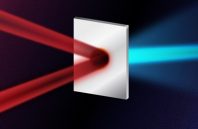Early-stage research by a university team in Sweden suggests that a new laser setup will double the energy of a proton beam – potentially offering a route to much wider access for high-precision cancer therapy.
While proton beam treatment is already used on some patients, in particular children with deep-seated brain and spinal tumors that are difficult to access, the equipment required is bulky and expensive. As a result, the high-tech approach is currently only available at around 100 clinics worldwide.
Theoretically, using lasers instead of particle accelerators to generate proton beams could reduce the size and cost of the systems by as much as 90 per cent, to a point where they could be deployed much more widely. However, current laser approaches are unable to deliver the kind of proton energies needed for effective, high-precision treatment.

 (585) 768-2513
(585) 768-2513

